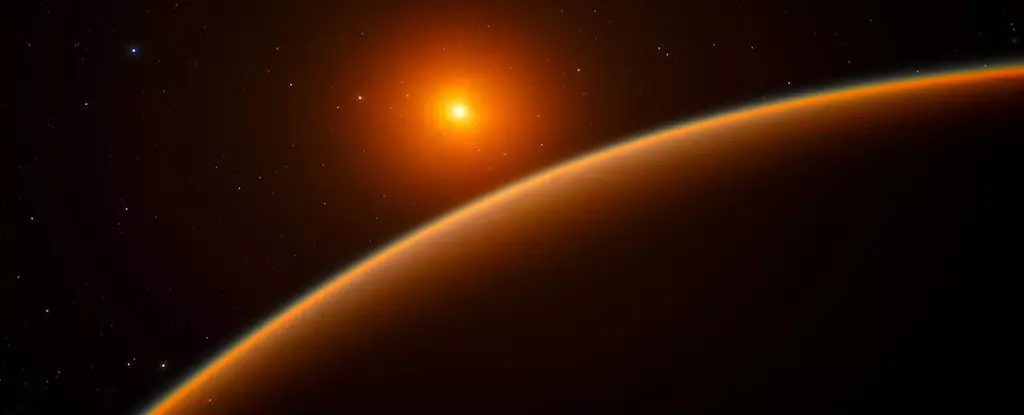Recent astronomical research has fundamentally challenged our understanding of exoplanets in the Milky Way, suggesting that Earth-like planets might be not just a rare phenomenon but a commonplace attribute of our galaxy. In a remarkable study led by Weicheng Zang, astrophysicists have identified a “super-Earth,” a planet larger than Earth yet smaller than Neptune, located intriguingly at a distance akin to that of Jupiter’s orbit. This significant breakthrough illuminates a previously uncharted domain in planetary demographics, hinting at a universe rich in diverse worlds, many of which may be waiting to be discovered. The implications of these findings are profound—they could redefine not only the search for extraterrestrial life but also the models we use to understand planetary formation.
Redefining Super-Earths: A New Perspective
Super-Earths have typically been characterized as planets within a certain mass range, primarily discovered in close orbits around their stars. However, this study pushes the boundaries of what we know by suggesting that these intriguing celestial bodies can also exist in distant orbits that were once thought to only accommodate gas giants. This revelation compels us to re-evaluate our assumptions about where we might find potentially habitable planets in the cosmos. If one out of every three stars in the Milky Way can host a super-Earth in a Jupiter-like orbit, the chances of finding similar or even more exotic planets are magnified significantly. The potential for diverse planetary systems leads us to consider a more expansive understanding of the conditions under which planets form and evolve.
The Power of Gravitational Microlensing
At the core of this study lies the relatively uncommon method of gravitational microlensing, which exploits the bending of light caused by massive celestial objects—acting as lenses—passing in front of brighter stars. This technique has proven particularly effective at spotting planets orbiting outside their stars’ immediate vicinity. Prior to this research, microlensing events had only revealed a small fraction of known exoplanets, leaving vast swathes of the cosmos undercover. The study harnessed data from multiple telescope networks to dramatically increase the sample size, unveiling a trove of planets previously hidden from our view. The use of this innovative technique shifts the paradigm regarding how we explore and identify exoplanets, expanding the horizon of planetary science.
Insights into Planetary Diversity
As the study suggests, the outer regions of planetary systems may hold bountiful treasures of distinct types of exoplanets. The recognition that these areas are not merely wastelands of celestial debris but are teeming with potentially habitable worlds indicates that scientists may have previously overlooked a significant aspect of planetary distribution. The work not only confirms existing theories about planetary variety but adds a layer of complexity to them, illustrating a need to prioritize further research focused on outer-orbiting exoplanets.
This newfound understanding challenges the long-held belief that our Solar System is a typical representative of the galaxy. Instead, we may be among a wide array of planetary configurations, each formed under varying conditions. The richness of this diversity elicits exciting possibilities for habitability and the composition of these worlds, giving researchers fresh areas of investigation, such as the potential for conditions conducive to life.
Challenges Ahead: The Road to Understanding
Despite the exciting insights offered by this study, the allure of exoplanets comes with its challenges. The detection of microlensing events, particularly ones that reveal planets, is a quest fraught with difficulty, often involving painstaking data collection and analysis. Even with advances in technology, tracking these cosmic events remains a formidable task, emphasizing the need for further developments within observational astronomy.
Additionally, while the study has opened new doors to speculation about the existence of a plethora of super-Earths, concrete data concerning their surface conditions and habitability is still scarce. A greater understanding of these planets is paramount, as we seek to unravel the complexities of their environments, geology, and potential to host life. Each piece of data collected in this ongoing quest serves as a building block that enriches our comprehension of the universe.
The findings from this study serve as an exhilarating reminder of just how much remains to be discovered in our galactic backyard. The prospect of an abundance of super-Earths challenges our persisting notions about planetary formation, diversity, and the types of worlds that could exist beyond our Solar System. As more research unfolds, the question is not whether we will find more of these planets but how our ever-expanding understanding of the Universe will shape humanity’s future explorations and perhaps—one day—our reach for the stars. With the Milky Way filled with cosmic wonders yet to be uncovered, the universe beckons us to embrace curiosity as we embark on this unending frontier.

